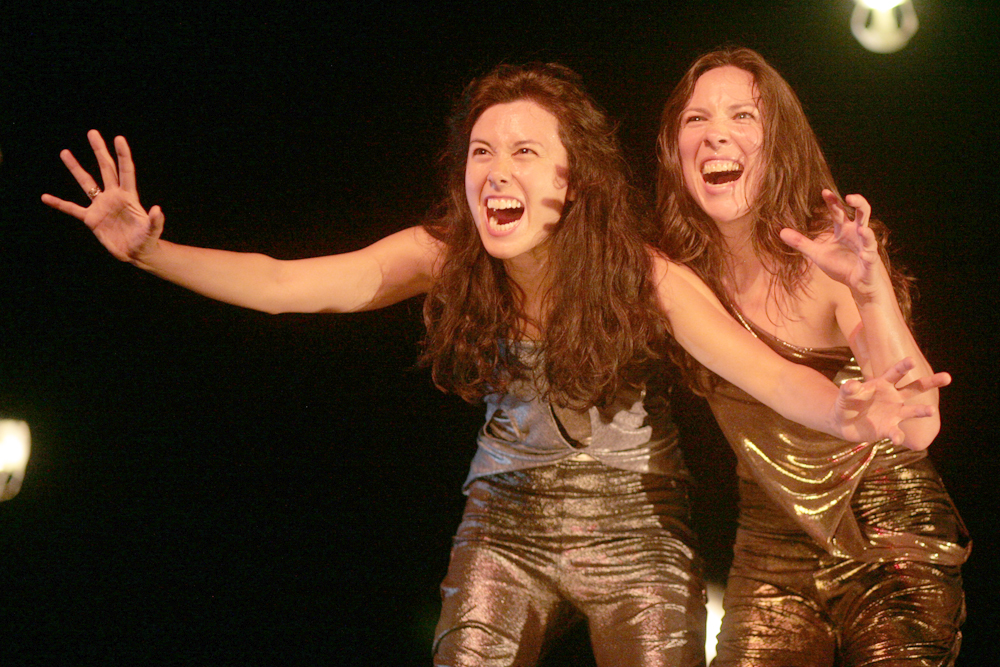How do you find a home when you find yourself away from the land you’ve grown up in?
For Native Alaskans who have left the village for the big city, for young Alaskans who have moved to the Lower 48 to find careers and for new Alaskans who have left homes Outside, that can be a common theme. It’s one Minneapolis artist Emily Johnson has found herself exploring in her narrative-based performance installations.
“How do you build a home where you find yourself?” Johnson asked. “How do we find community and build both physical structures but also emotional structures? How does that place become home?”
Johnson and her art company, Catalyst, perform “Niicugni,” the second in a planned trilogy of performance pieces that started with “The Thank-you Bar,” performed in 2009 in Homer. Shows are at 7:30 p.m. Friday and 3 and 7:30 p.m. Saturday at Pier One Theatre on the Homer Spit. Johnson has been visiting Homer this month as artist-in-residence for Bunnell Street Arts Center.
Born and raised in Sterling, Johnson is Yupik on her father’s side, with family from Bethel and Akiak. After college in
Minneapolis, she found a new cultural
home in Minnesota.
“I just accidentally found a good place to be,” she said in a phone interview in a break earlier this week from rehearsals at Pier One Theatre. “It’s a really wonderful community of artists of all disciplines.”
“Niicugni” (pronounced nic-CHUG-nee) means “pay attention” in Yupik, and in that sense means listening to the land and the animals and people who live on it, especially fish.
Part of the inspiration for the work came from “Skin Sisters,” a show that opened at Bunnell in July 2009 when Johnson visited Homer for the “Thank-you Bar” performance. “Skin Sisters” featured work by artists who had studied with the late Fran Reed, who taught workshops in sewing with fish skins.
“It was just stunning and beautiful work,” Johnson said of the show. “Of course, fish have been part of my life. This was a new way to work with the fish.”
Johnson learned how to prepare and sew with fish skins from Audrey Armstrong, one of the “Skin Sisters” artists. She had the idea of using fish skins to make lanterns, and teaching volunteers in workshops in Vermont and Minneapolis, prepared skin lanterns that are used in “Niicugni.”
That interaction with her audience is part of Johnson’s performance technique. She would gather volunteers together to eat a salmon feast and then prepare the skins — “scrape, scrape, scrape,” she said.
“It was a really great way to share the fish, share fish that I love, and in a way part of Alaska that I love,” she said. “Share these stories about this dance I was making.”
Johnson uses dance, storytelling, video, live music, light and sound to create her performance installations. Her interaction with the audience continues beyond the lantern making and into the installation.
Part of her performance uses 40 volunteers in groups of eight to periodically pass through empty spaces in her dance. For her residency she has been working with people with varied backgrounds to establish specific gestures and the moments when the dancers enter the performance.
In a way, that echoes the invitational part of traditional and even contemporary Yupik and other Native Alaskan dances.
“I thought about that connection recently,” Johnson said of the invitational dance. “The community groups, they do come up intermittently.”
She first had the idea of involving community dancers when she had the thought that there could be two dances happening simultaneously, Johnson said. It also makes each performance unique to the community.
“It doesn’t make sense to come to a place, plop a dance down and leave again,” Johnson said. “Having people there in the dance helps me root it a bit more.”
By doing that, she also leaves a bit of herself and her company’s performance.
“It’s us as a quick community,” she said. “How can that experience that people have, how can that be spread out in the community in a large way?”
From her small-town road Bush roots, Johnson herself has spread out in a large way. “The Thank-you Bar” won a 2012 Bessie (New York Dance and Performance) award, and she has received numerous grants and fellowships for her work.
Of “The Thank-you Bar,” New York Times dance reviewer Gia Kourlas said, “(It’s) as disarming as they come … There’s a primitive formalism to Ms. Johnson’s movement that steers it away from being dully playful; it’s never as casual as it seems.”
Johnson has begun thinking of her next piece in the trilogy, tentatively titled “Shore.”
“I’m not done with home, what is the connection of land to each other,” she said of her work.
For “Shore,” she wants there to be a feast, a sharing of food, but also of action. In that performance, she would like to work with local organizations, perhaps doing some simple act like planting trees.
“We might gather some energy around. What needs care?” she said. “Actually making the world a little better.”
Michael Armstrong can be reached at michael.
armstrong@homernews.com.
Creating home wherever you are


